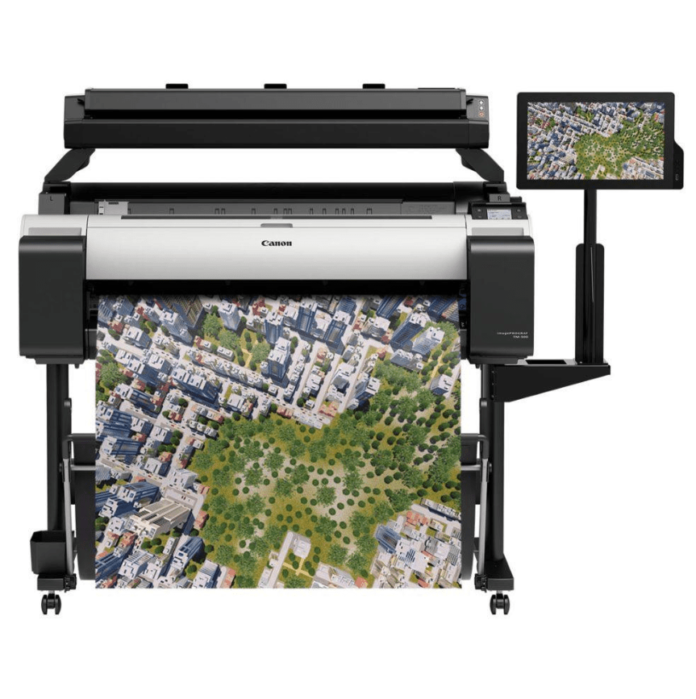Technological advancements are essential to increase productivity, accuracy, and originality in the ever-changing field of architecture. Architectural color plotter scanners are one example of such technological marvels. These devices are sophisticated tools that combine excellent plotting, scanning, and printing capabilities. Specifically designed to meet the stringent demands of designers and architects. in contemporary architecture Architectural color plotter scanners have become an essential tool for creating large-scale drawings. as well as digitizing blueprints and designs.This article discusses the features, benefits, and effects of architectural color plotter scanners. Emphasis is placed on the importance of improving workflow. Design precision and visual communication
Table of Contents
What is an Architectural Color Plotter Scanner?
Architectural color plotter scanners are specialized tools that serve three main purposes:
- Plotting: Large-scale printing of diagrams, renderings, and blueprints for building designs.
- Scanning: Digital drawings, drawings, and diagrams can be created from photocopies by scanning large documents at high resolution.
- Copying: Architects now have an efficient way to make copies of their own drawings. Since large documents can be simulated in both color and black and white.
This versatile tool is specifically designed to handle architectural tasks. When conventional printers and scanners are not enough due to the size and complexity of the equipment Ideal for architectural firms and design studios. Because it has the ability to handle large documents and high-quality color printing capabilities.
Key Features of Architectural Color Plotter Scanners
1. Large-Format Printing and Scanning
The ability of architectural color plotter scanners to handle large documents is one of its most prominent capabilities. Site plans, blueprints, and 3D renderings are examples of architectural drawings even custom sizes. Special large plotter scanners are needed for architectural applications. This is because standard office printers and scanners cannot handle these sizes. Because of the precision of these printers in printing and scanning large documents. Even the smallest details, such as thin lines and descriptions, can be captured. It can be captured and reproduced. This is very important for architectural design. This is because precision is important to ensure that the building is built according to plan.
High-Resolution Output
The accuracy and clarity of architectural drawings are very important. Architectural color plotter scanners provide high-resolution results for scanning and printing. Capable of printing up to 2,400 dots per inch (dots per inch), this advanced model ensures accurate and precise design renderings. When working with color renderings or visualizations This high resolution is very useful. Small details such as gradients and shadows can have a big impact on design communication. Scanners can also capture the fine details included in site plans, blueprints, and other records without sacrificing any information
Color Accuracy
Color accuracy is another critical component of architectural color plotter scanners. In addition to resolution, architects often use color-coded designs to distinguish components such as structural components, plumbing, electrical systems, and more when communicating complex designs to builders, engineers, and clients. Accurate color reproduction is critical to maintaining clarity Whether printing detailed 3D renderings or technical drawings with layers of paint, color plotter scanners use advanced ink technology and color management systems to ensure that the prints are crisp and true to the original design.
Efficient Workflow Integration
With sophisticated software and networking capabilities, many contemporary architectural color plotter scanners can easily be integrated into an architect’s digital workflow. These machines can be operated remotely or connected to multiple users on the jobsite. It’s possible to send print jobs from a workstation. Architects can print or scan documents directly to and from cloud storage with certain devices that support cloud connectivity. In today’s remote work environment, teams often work from different locations and need to access project information quickly. Therefore, this capability is critical.
Multi-Functionality
Architectural color plotter scanners eliminate the need for multiple devices by combining printing, scanning, and copying functions into one device. This increases productivity while saving physical space in offices and creative studios. Architects no longer have to switch between computers to quickly scan hand-drawn sketches or markups. Edit them digitally and print updated copies. This ease of use increases productivity. This is especially true in busy work situations where time is of the essence.
The Role of Architectural Color Plotter Scanners in Modern Architecture
Architectural color plotter scanners have revolutionized the way designers and architects do their jobs. Here are some of the key ways these devices are changing the industry:
Improving Design Accuracy
The foundation of any architectural endeavor is precision. Small mistakes made in the design process can lead to major problems during construction. It doesn’t matter how large the building is. Be it a private home or a large commercial building. Architectural color plotter scanners ensure that all measurements, curves, and straight lines in drawings are perfectly captured both digitally and in print. Architects can accurately transform hand-drawn plans or sketches by combining high-resolution scans of these documents with digital design tools.
Enhancing Collaboration and Communication
The collaborative architectural process involves multiple stakeholders such as engineers, contractors, clients, and municipalities. The success of a project depends on effective communication between these parties. High-quality large-format copies of drawings can be easily shared with an architectural color plotter scanner. This ensures that all parties involved are aware of the details of the project.
Preserving and Archiving Designs
Architects can also scan hard-copy documents using this tool. This allows drafts to be shared and reviewed via email or cloud storage. This helps improve teamwork. Especially in projects where the team is geographically dispersed.
Architectural color plotter scanners are also very useful for document storage. Architects often need old drawings, images, and documents to preserve for future renovations or for historical reference. Scanning these documents at high resolution ensures their digital preservation and prevents them from deteriorating over time.
Supporting Sustainability and Efficiency
This digital archive provides architects with a reliable way to protect their work. As it is easily accessible and replicated as needed.
Fast document scanning and printing eliminates the need for external document printing. This makes architectural color plotter scanners a more environmentally friendly option. Additionally, many contemporary models include energy-saving features that reduce power consumption and encourage a more environmentally friendly workflow.
Conclusion
Architectural color plotter scanners are essential tools in today’s modern architectural field. Large prints High-resolution scanning And accurate color reproduction are features that these machines offer. This helps architects create and distribute complex drawings with precision. These machines increase the accuracy of designs. Working together more effectively and improving processes These are key elements in the successful completion of an architectural project. These devices will be at the forefront of innovation as the architectural sector evolves. It helps architects design future structures and environments. Whether you are designing a small residential project or a skyscraper. Architectural color plotter scanners can revolutionize your design workflow.



